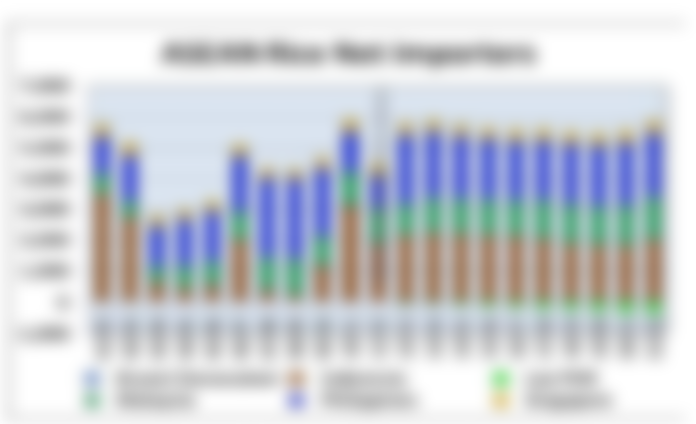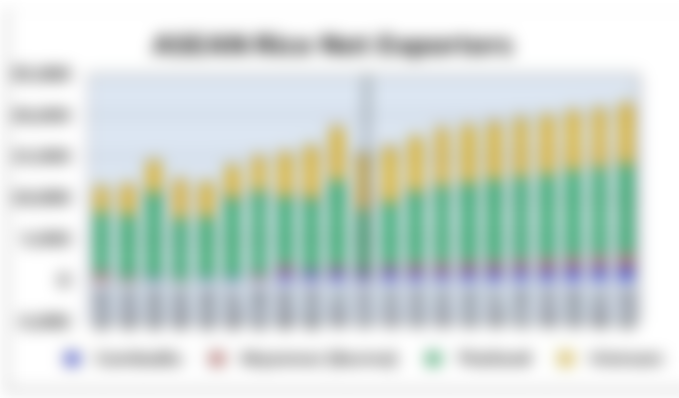As I noticed what happened in our country these past few years, especially in our farmers. I wrote this as I want many people to be aware and give insights into how this law can be improved.
Philippines is the biggest rice importer, rice is the most important food crop and a staple within the country in 2019 with purchases estimated at a record 2.9 million tonnes. The production of rice plays an important role in the Philippines’ economy and food supply. The Rice Tariffication law has a big impact on our local farmers causing them to compete with import goods that are sold at ate cheaper price. They are struggling and having a hard time adopting the prices among its competitor.
Recently there is a news about farmers that selling a harvested rice around 7 pesos per kilo, this is the result of the Rice Tariffication Law, they compete in toll their goods at a lower price but what happen, it leads to dowdownfall Filipino farmers. Also, it causes an inflation rate because of the price being lowered it becomes affordable and accessible to the Filipino. Under this current rating theme, no farmer can continue planting rice below cost. The impact on the farmer social unit level, like the higher incidence of deficiency disease, school dropouts, and magnified vulnerability to early marriage, are effects that can’t be unheeded. The Rice tariffication has a positive and negative effect. The positive effect is, it can lower the retail price, address the problem of rice shortage, lower inflation rates, and has interventions that supported the rice farmer. Despite the positive effect, the negative effect still noticeable and because of this, the problem arises. Lacks of safety nets for Filipino farmers.
According to RTL, "farmers should be protected by the Rice Competitiveness Enhancement Fund (RCEF). The annual amount of P10 billion from this program should address the increase of income of Filipino farmers and funding the farmers with assistance."
The assistance is imposed on rice farm equipment, inbreed rice seeds, and enhancement of skills. But the farmers feel that this is not helpful for them because they are hardly competing against imported goods at a lower price. The government lack essence of regulation.
Rice Import

It shows in the graph that as time goes by, the import of rice in the Philippines continuously increases. The National Economic and Development Authority (NEDA) expects inflation to more ease within the near term due to the higher supply of rice within the country allowed by the Rice Tariffication Law (RTL). Through having the essence of globalization, Philippines was able to import and export rice and other commodities from other countries and vice versa.

The figures above show the data that the Philippines is determined as the biggest importer, following by Indonesia.

Thailand and Vietnam are both ASEAN members that accounting for 48% of global net exports. Vietnam is the major importer of rice in the Philippines accounting for 90% of rice imports according to DTI.
According to Socioeconomic Planning Secretary Ernesto M. Pernia, Rice Tariffication Law continued to assist pull down overall inflation within the near term because it continues to help improve the rice stock inventory of the country. This access to cheaper rice is good for Filipino customers. While the customers enjoy lower rice costs, at the same time the government must tend to should protect the Filipino Farmers from falling palay prices.
The government should fast-track and prioritize programs and comes beneath the Rice Competitiveness Enhancement Fund to boost production and improve the profitability of the Filipino farmers.
Recommendations
Focus on the regulations that can lessen or reduce the competition/competing between local farmers and the import goods. By this, it can lessen the struggles of farmers. Also, it can control the prices in the markets.
This law seems to help the Filipinos to have access to a wide market of cheaper rice that helps in preventing inflation pitch by a large part of the supply. But the government must prevent or pays attention to the negative impact of the law which the rice farmers and farm workers and penniless because of the competition in the markets. Proper implementation and strict regulations will benefit everyone.
References:
Faicol, B. (2019), How Rice Tariffication Law Affect all of us.
Index Mundi (2020), Philippines Milled Rice Trade Year Imports by year.
FFTC-AP (2019), The Rice Tariffication Law: Implications and Issues.
Wailes, E & Chavez E. (2012), ADB Sustainable Development Working Paper Series. Retrieved from Asian Development Bank
NEDA (2019). Rice Tariffication Law Proves it is Beneficial.
Leave your insights about this one. I will appreciate it. Thank you!
Myleganders
...and you will also help the author collect more tips.



i remember before we could sell palay for 27 pesos before the rice tarification law was passed however the price plummeted to 10-15 pesos only . the law was killing the rice farmers and the middle mens were the ones that is binifiting from the said law